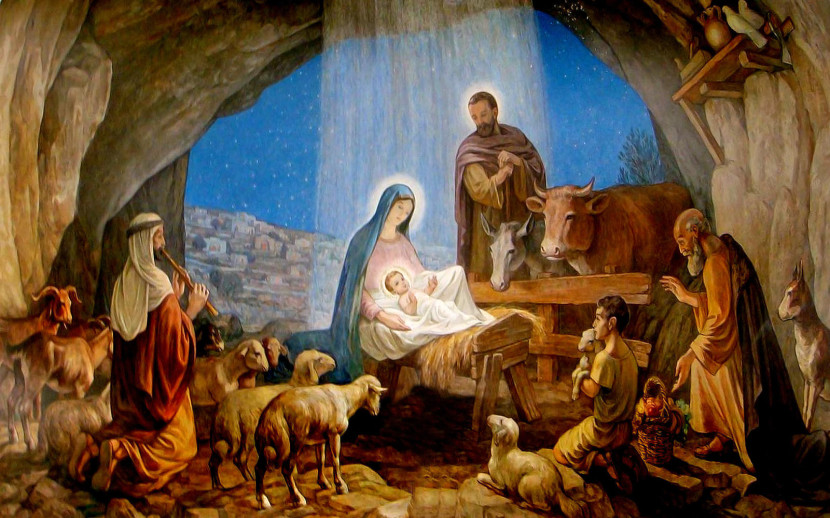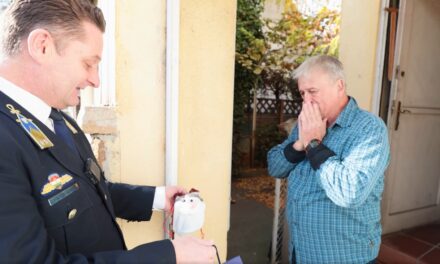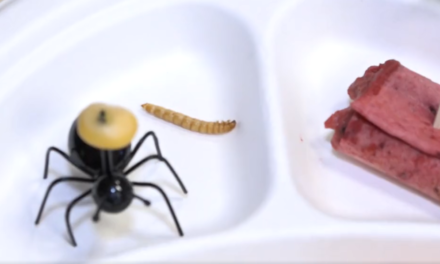A nation that does not know its past does not understand its present, and cannot create its future!
Europe needs Hungary... which has never let itself be defeated
One hundred years of Christmas message
The motto formulated above did not touch the soul and consciousness of a part of the Hungarian people. There was little lesson for them that a nation that does not know its past can do anything. Let's hope that we Hungarians have learned from our past. There's plenty of ammo for that. It is enough to mention Trianon. But for now let's just stick to the Christmas holiday.
János Esterházy (1901-1957), one of the unshakable 20th century martyrs of Hungarian history, said on one occasion when he was already in prison for this, and in the longer term death was imminent. Our cross is not the swastika, but the cross of Christ. And, thinking further about the above wise and brave statement, we can add that our star is the star of Bethlehem and not the red star.
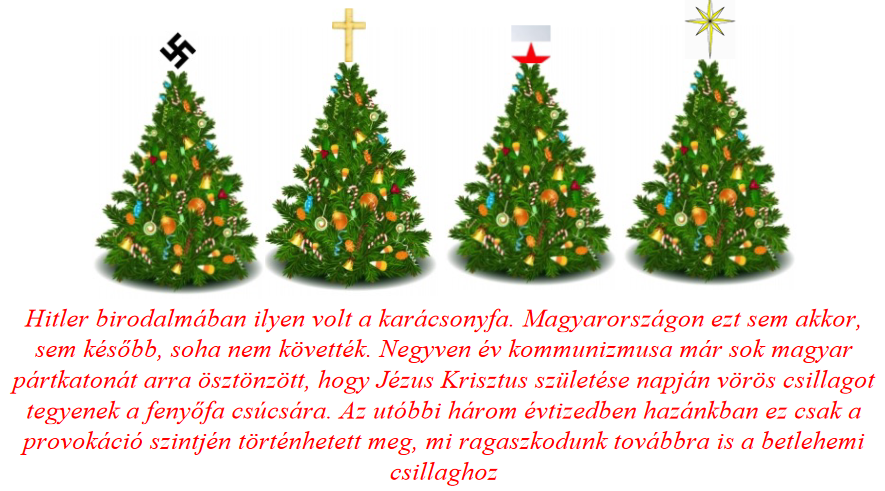
Let's be careful! Germany has dragged us into world conflagration twice in the past hundred years. First in 1914, which ended in Trianon. The second time was in 1941, because of which we got the soul-destroying communist decades. In the 2020s, they will try again with us to give up our Hungarianness, our Christian culture, and our attachment to the family. The saying goes that: Hungarian justice is three! Don't let this be true now, let's not follow the bad German example for the third time.
Hungarian Christmas round
The first part of the holiday cycle is Advent, the period of waiting. The waiting, the birth of Jesus Christ, the coming lasts from the lighting of the first candle until Christmas Day. In Hungarian families, even today, Advent is supplemented by two popular customs, the making of an Advent wreath and an Advent calendar. The latter is more for children, for children.
The Advent wreath is only available on the 19th and 20th. spread at the turn of the century, when it became known that it was first made by an evangelical pastor. It was originally made of pine branches with four candles on it. Nowadays, candles with many wreaths and all kinds of colors are used, but traditionally three purples (the colors of repentance) and one pink (the color of joy) express the message of the Advent lights.
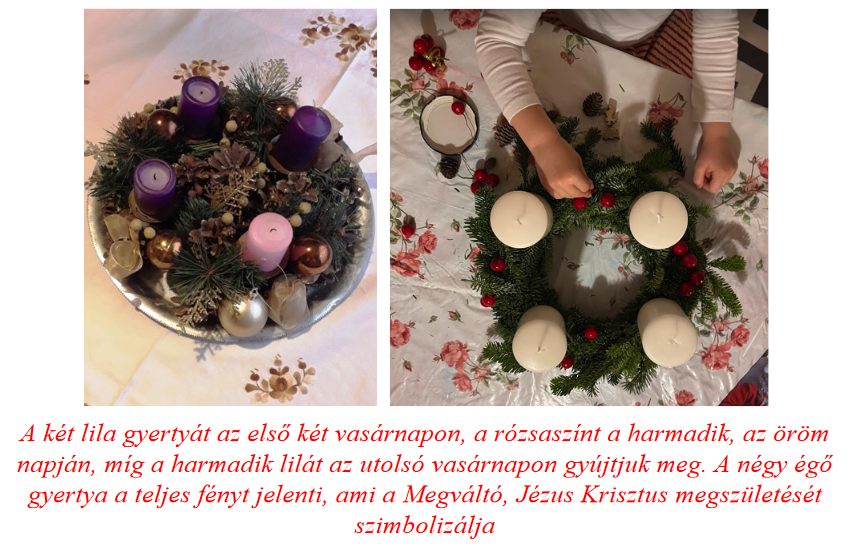
The creation of the advent calendar originates from German territory, which spread in Hungary from the beginning of the 20th century. This is originally a small box with 24 numbered closed windows. The first window can be opened on December 1st, and a new one every day from then on. The previously unknown gift contained in it brings joy to the children, just as the last window revealed on December 24 represents the greatest joy, the birth of baby Jesus.
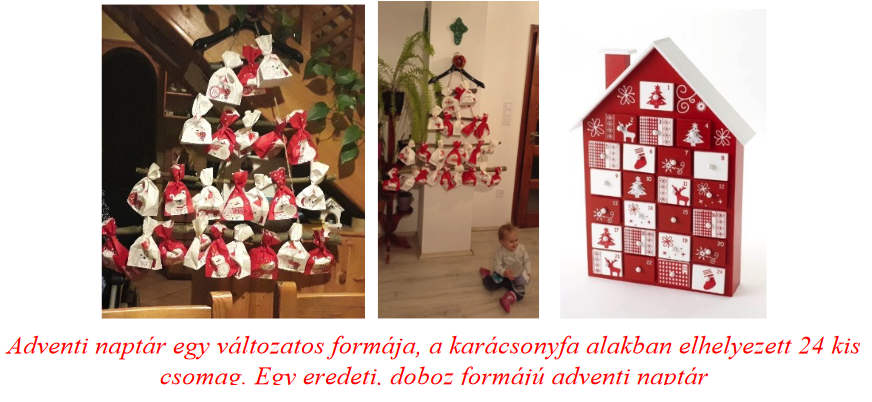
The Hungarian Christmas cycle lasts from the beginning of Advent to Epiphany. The beginning of Advent in 2021 fell on November 28, the Sunday when we lit the first candle. The Christmas holiday season begins with St. Andrew's Day, which determines the time of pig slaughtering, the cheerfulness of the holidays, and eating habits. Christmas is a holiday of love for all peoples. Colorful traditions have developed over the centuries, which vary from landscape to landscape in the Carpathian Basin, and differences can also be discovered in the Christian religion. However, the point cannot change, that every church celebrates the birth and earthly incarnation of Jesus Christ at Christmas. For Catholics, the highlight of Christmas occurs at midnight on December 24, during the midnight mass. Jesus Christ, the Savior, is born. On the 24th, the Reformed will attend a church service, and then on the 25th of December they will take communion.
For many Hungarians, one of the most beautiful works of literature related to this is Endre Ady's poem Christmas, whose two well-known lines read: "To
my dear little village, the Messiah, used to bring happiness. / Young and old go to the church in a long line. ;/ in my dear little village they give thanks to the God of the highest."

In the Hungarian language, the word Christmas has several explanations. The Bulgarian word kracun (step, step, step) invented and forced in the 1970s is a product of socialism. Our term for Christmas is not of Slavic origin, just because none of the surrounding Slavic peoples use it. The Catholic Church derives it from the Latin word creatio (creation), which also appears in New Latin languages. For example, calatio (convection) comes from the original Latin term. For us Hungarians, the word kerecsen or kerecseny corresponds to the word Christmas, not only from an emotional, historical, ethnographic point of view, but also based on a linguistic approach. The old Hungarians used to hold the falcon flight, i.e., flying in a cage, at Christmas, on December 25. And the meaning of kerecsen is black, which refers to the shortest, darkest day of the year, which is followed by light. The Kerecseny Festival of Lights is already known from the history of the ancient Hungarians.
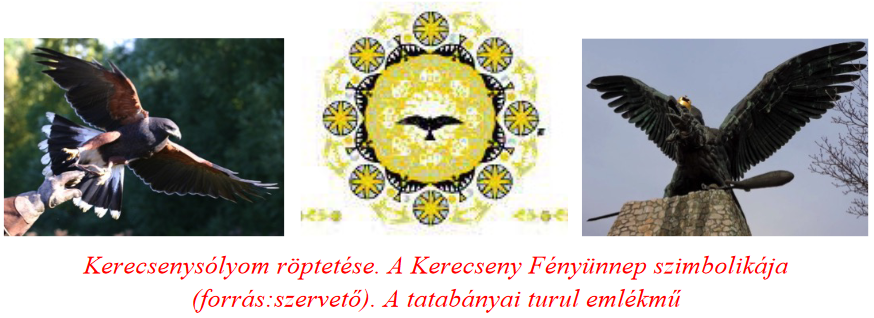
Epiphany, the end of the Christmas cycle in 2022 in Western Christianity - as every year - falls on January 6. It should be known that Christmas always falls on the same days (December 24-25-26), while Easter is a so-called moving holiday. Christmas is celebrated on January 7, and Epiphany 13 days later. On Epiphany Day, we remember the wise men from the east and the three kings, which is one of the defining holidays of the church. It means the ceremony of consecrating water, the closing day of the Christmas season. all that is left of this is that the Christmas tree is taken down.)
HUNGARIAN FOLK CUSTOMS
Chanting
Chanting is the performance of rhymes, poems, and good wishes at houses, which are actually texts asking for donations.
Advent began with these group visits to the village. The term chanting is the most common, but it is also known as angelic comfort, chanting, mendicating, and paszízás. The singers visited the houses of their village according to age groups. The children, boys and girls, started chanting in the morning hours, the young people in the afternoon, and the older people in the evening hours, they went from house to house singing, announcing their good wishes, accompanied by poems and rhymes. They only started singing when they got permission from the family. The oldest song begins with Csordapásztorok..., which we already know from a church collection created in the middle of the 17th century. The other best-known hymn is Pásztorok kyeljőjn... it is included in a collection a hundred years later. The melody of the angel... was heard most often from Heaven. Transylvanian chanting was very diverse, as the rich traditions of the Székely, Kalotaszeg, Bukovina, and Gyimesi peoples were different in almost every village. However, a multi-day dance was typical in Transylvania, which had a strong tradition especially in the villages of Kalotaszeg. The dances on the Christmas holiday lasted until All Saints' Day.
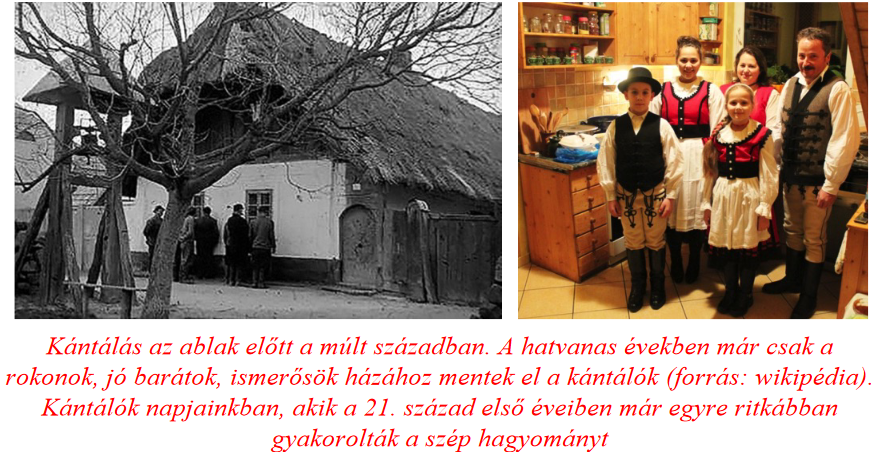

Wafer carrying
In Hungarian-speaking areas, the teacher and his wife, or the cantor, baked the wafers. The children then carried them around the village, in most places in the week before Christmas. Meanwhile, they sang and recited poems. The basket was placed on the threshold, and the household members made donations for the teacher (the cantor) instead of the wafers. The custom of carrying wafers was developed in the Highlands, and it survived for the longest time in the villages along the Ipoly and in the Palócs. Wafer carrying also had its rules. The children's delegates took only as many wafers to each house as lived there, plus three. (One for the Christmas tree, one for the master beam, one for replacement if one breaks.)
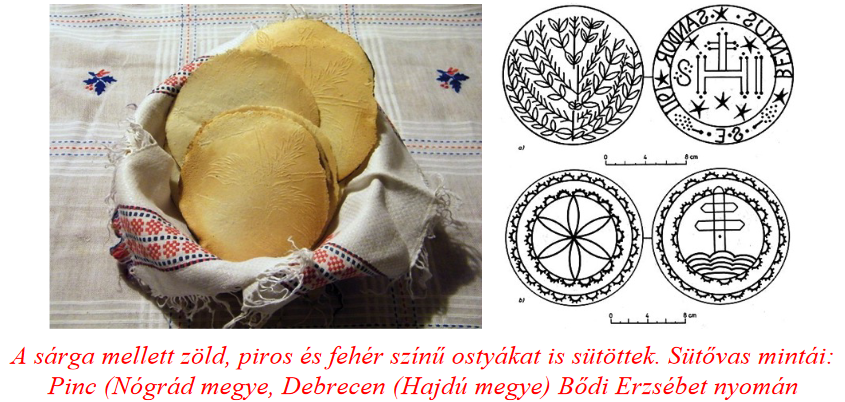
A wafer-carrying poem that expresses the essence of the custom of wafer-carrying:
Let joy and peace be the master of this house,/ what the angel of God said to the shepherds,
I also bring the wafers as a shepherd,/ A white wafer indicates the purity of Christ,
the green color his innocence,/ Red, the shedding of his holy blood for us, Yellow
, his bitter cup and death , /Having said this, I thank the Lord
and wish you happy holidays!
Cradle handshake
Cradle-walking or cradle-handling is a version of the nativity scene, but the cradle of baby Jesus is carried by young girls. The young people passing through the village impersonate Mária, József, the shepherds and angels. József is portrayed by a boy, the only one who can participate among the girls in the cradle walk.

Holy family visit
Finding a place to stay or visiting the Holy Family is one of the customs before Christmas, which starts nine days before the birth. During this time, the nine families living close to each other visited each other. They took the picture of the Holy Family to each other, before which they prayed and sang.
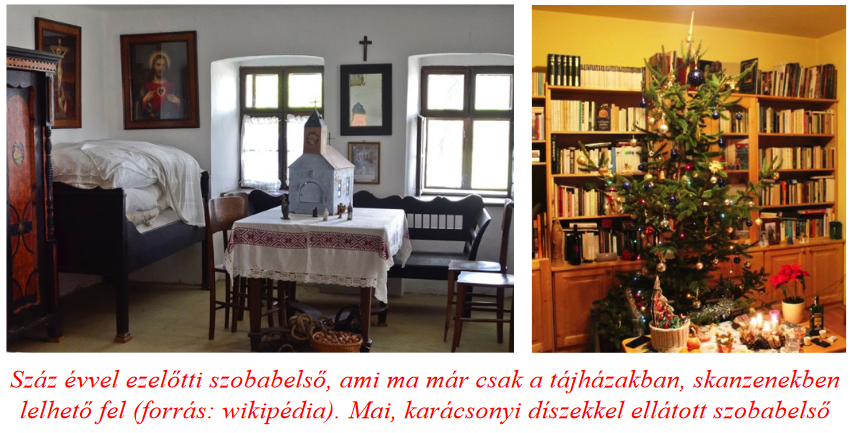
Rora's
Morning mass, which is also called the sweet mass, the angel mass. Its meaning comes from the Latin word "dew". The villagers went to Rorate from the first Sunday of Advent until the first day of Christmas, which was held every day in Catholic churches. In Transylvania, all sheds, barns, cages, doors, and windows had to be closed during the mass, because the witches could then harm the animals, i.e. cause harm.
Santa Claus
Hungarian folk tradition has always celebrated Saint Nicholas' Day, Santa Claus, on December 6, never the Russian-Soviet distortion, Santa Claus. The latter only became "fashionable" during the Rákosi-Kádár period. The goal was to make people forget the role of the church and the name and history of Saint Nicholas, who is accepted and highly respected throughout the Christian world (Eastern and Western).
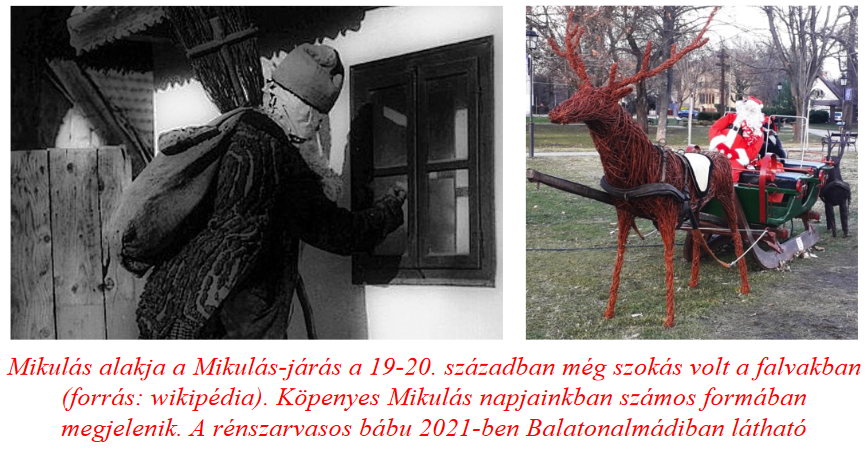
Santa Claus in Chains and his entourage of crampons with pitch-black faces chased the evil spirits away from the house by rattling chains and making noise. Entering the house, this Miklós threatened the bad children with his scary appearance and distorted voice. He also gave a present, but the appearance of Santa Claus was more characterized by the "beating" with a stick. The use of virgács also came into use at that time. Small children were afraid of it, and therefore this custom was banned from the end of the 19th century. He was replaced by the smiling, gift-giving Santa Claus in a beautiful red and white fur long coat. This Cloaked Santa appeared for the first time in the cities, the scary Santa figures remained in the villages for a long time.
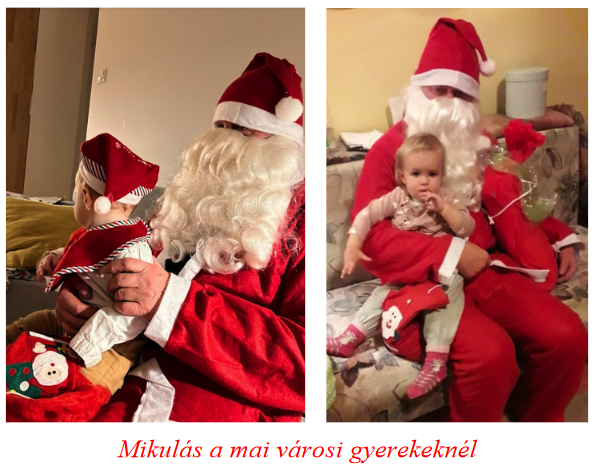
Luca day, lucasing
Luca was the day of the winter solstice before 1582, until the Gregorian calendar replaced the Julian calendar. Luke's day, December 13, was followed by the longest night of the year, when Saint Luke transformed into a witch. Luca's day was the day of girls and women, and on this day they were not allowed to work, but this day also meant increasing the egg yield of the hens. In the peasant world, almost all of the ancient traditions - including the feasting - served to produce the next year's food, meat and wheat. On Luca's day, the young boys visited familiar houses and families, and in exchange for their good wishes, they expected a donation from the family. (If they didn't get this, it was rather in a humorous form, but they cursed the stingy householders.)
Many traditions and customs are associated with Luca's day. These include waiting for the Light Fairy, as well as love predictions, such as cooking Luca dumplings. The most well-known customs are Luca chair making, Luca garlic and Luca wheat. Making Luca pumpkins was also known in Transdanubia, not only in the Anglo-Saxon countries. Luca's day has its greatest significance and its tradition expanded with spectacular, colorful elements in Sweden.
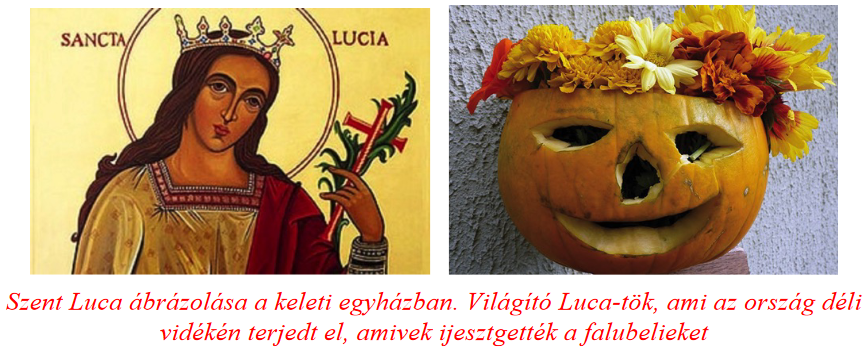
The Luca chair was carved exclusively by men, which was actually a three-legged constitution. They started work on Luca's day, and every day, until December 24, they adjusted it a little. After the 12 days - which by the way meant the 12 months of the year - the chair was taken with them to the midnight mass. Standing up, in the church, they could see who the witch was in the village.
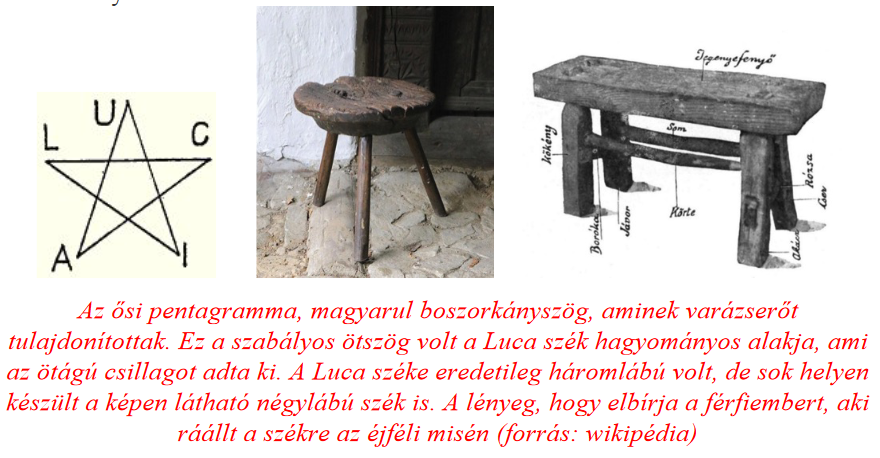
Hatching of Luca wheat should begin on December 13, when wheat grains are planted in a bowl. Germination took place near the stove or oven to keep it in a warm place. The wheat sprouted on Christmas Day was used to decorate the Advent altar in the church, on the other hand, it was used to decorate the house, and the next year's harvest was also "read" from it.
The girls also followed a custom on Luca's day. They cooked dumplings, in each of which they hid the name of an unmarried man from the village. Based on the name of the man hidden in the first dumpling to rise to the top of the water, they knew which of the girls would get married in the following year.
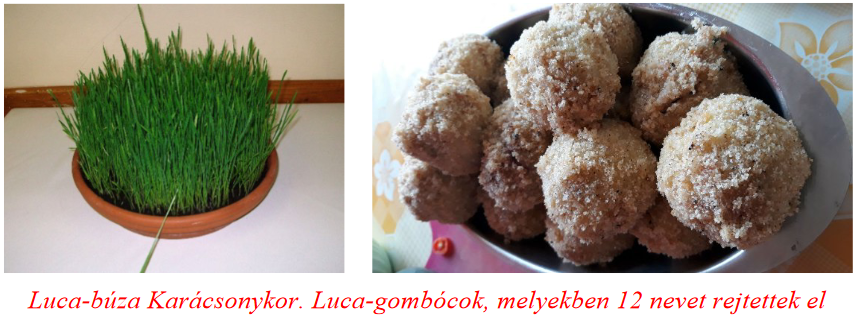
Nativity
The nativity scene best expresses the mystery of the Savior's birth. This shepherd's play with several actors was known in almost every landscape of the Carpathian basin, but its most varied versions can be seen in Transylvania. The custom is named after the biblical city of Bethlehem. The essence of the game is that the angels wake up the sleeping shepherds and send them to Bethlehem to look for the Savior born today. At the end of the musical and poetic game, the shepherds hand over their small gifts and say their good wishes.

Even on Christmas Day, the purpose of folk customs is to drive away evil, harmful spirits by making noise, wearing animal skins, costumes, and masks. This is also when the nativity scene takes place. This game was originally performed by children in churches, and later by visiting houses. Animals were often included, and the child Jesus was depicted with a live baby. The characters - shepherds, angels, Mary, Joseph - still play out the biblical story about the birth of Jesus, and then give their gifts and wishes. After that, the family entertains the nativity scene.
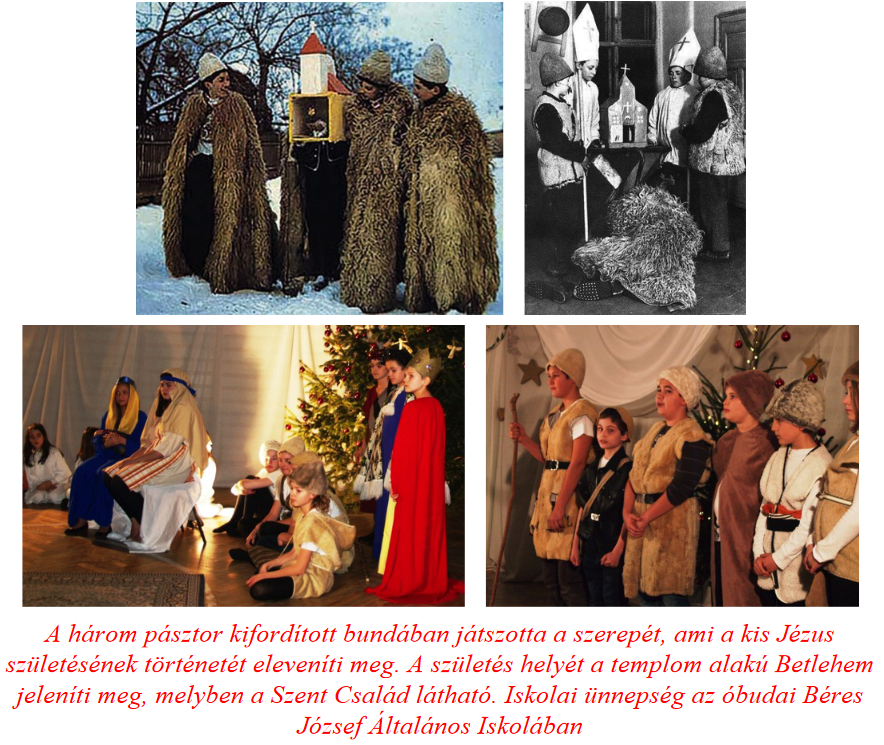

Christmas Eve
Among Hungarians living in the Carpathian Basin and anywhere in the world, Christmas is the most important and intimate day and event on December 24, Christmas Eve. In the past, the festive dinner took place according to a strict order, which included the food on the festive table and the tasks of the family members. For example, the farmer went out into the yard and shot into the air with a rifle to drive away the evil, harmful spirits. The hostess had to put all the food on the festive table because she could not get up during dinner so that she could have hens that would lay good eggs the following year. These customs, which vary by landscape unit, can only be found occasionally in villages that stick to their traditions. However, in many places, even urban families stick to the food on the table. (It should be noted that in most Western European countries, families eat their holiday lunch or dinner on December 25.)
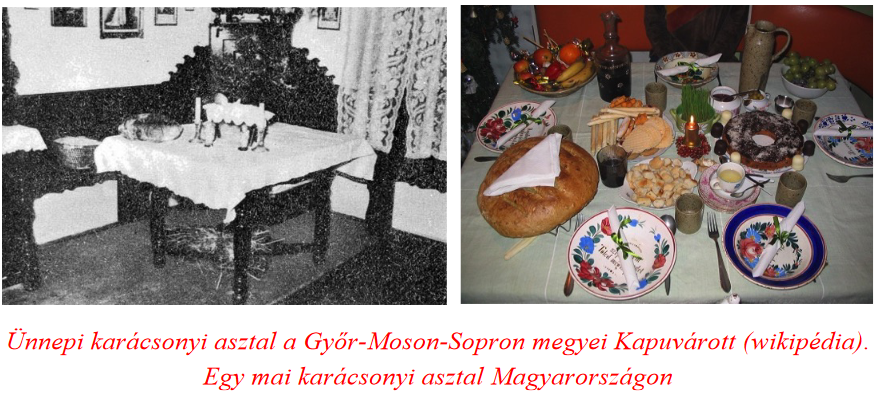
People living in the Christian culture of the world, even if they do not keep the old customs, Christmas is also about love and family togetherness for them. Even on Christmas Day, children look forward to the gift with great excitement, but on this day, every member of the family receives a gift. Unfortunately, in the consumer society, gifting is the biggest source of income for business networks, which they make good use of. The advertising campaigns almost enslave the majority of people, and the expression of love is often the same as the purchased products, which has distorted the meaning of the Christmas mystery.
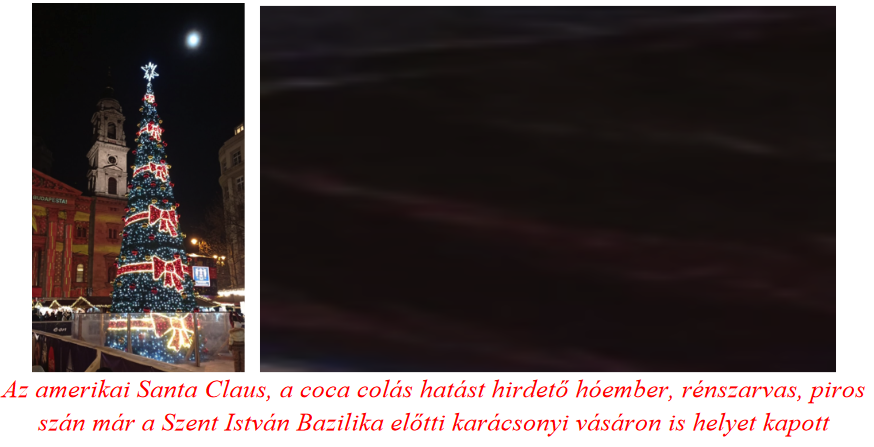
Breakfast, singing (December 26)
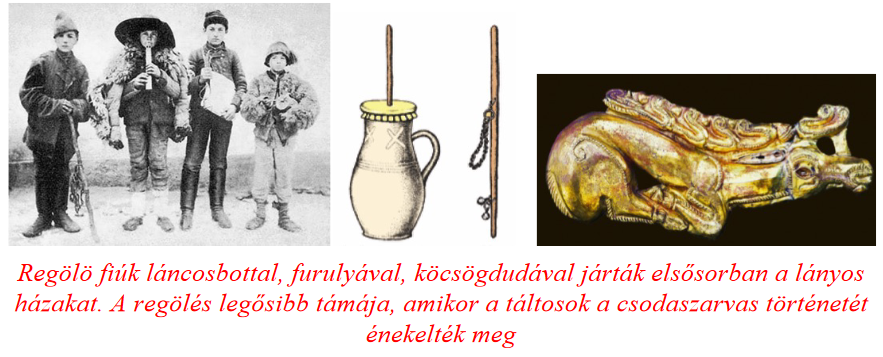
Regölés is probably the most ancient custom among all traditions, since our ancestors were the singers of the ancient Hungarian culture. The people of Táltos fell into ecstasy and recalled the mythological elements when they sang the Miracle Deer and recited rhymes. Later, the figure of King Szent István was included in their songs in a similar way. The welcome always began with the text "Get up, master, get up, God has come to your house...". After each verse, the refrain "Haj regö rejtem, regö-rejtem" was always sung.
The custom of regölés begins on the second day of Christmas, when the Stephens were greeted, recalling the name and figure of Saint Stephen. After that, the regös people visited the houses until New Year's Day, where they told the residents of the house their good wishes written in song and verse. The regölé, like other customs belonging to the Christmas holiday circle, advocated abundance, a good harvest, and the search for a partner. However, some donations were expected from the family for the good wishes. The people from Regós also set out in small groups, in pubs, in fur coats turned inside out.
John's Day (December 27)
John's day is traditionally the day of consecration of wine. The wine consecration was performed by the priest in the church, who on December 27 gave his blessing to the rich grape harvest and the wine. The Hungarians attributed magical power to the consecrated wine, which they used to heal people and animals. The best-known example of this is when Tokaj aszu was available in pharmacies, where it was sold as medicine.
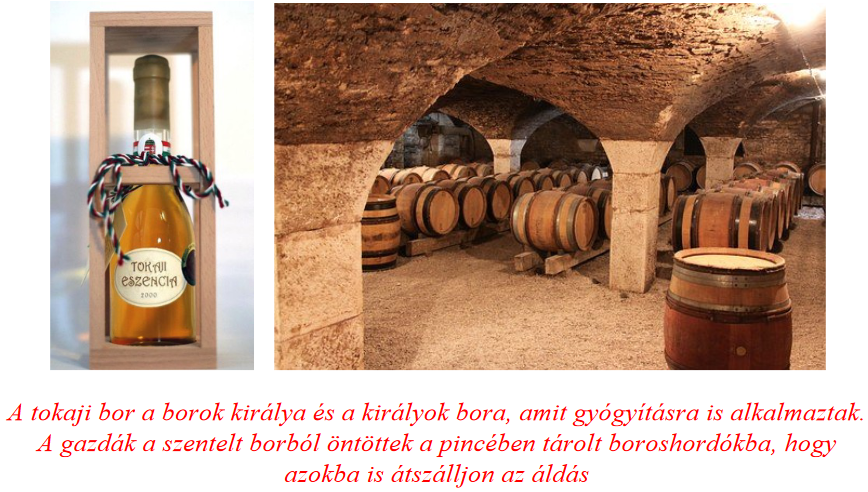
All Saints' Day (December 28)
All Saints' Day reminds us of King Herod's carnage. The news of the birth of baby Jesus reached the ears of the king of the Jews, who, fearing that the Savior would encroach on his power, slaughtered all boys under two years of age in his kingdom. However, the Holy Family fled to Egypt, so Jesus, Mary and Joseph survived. On the holiday held on December 28, they remember the little martyrs, the little saints. (You can read about the authentic history of the little saints in the Gospel of Matthew.)
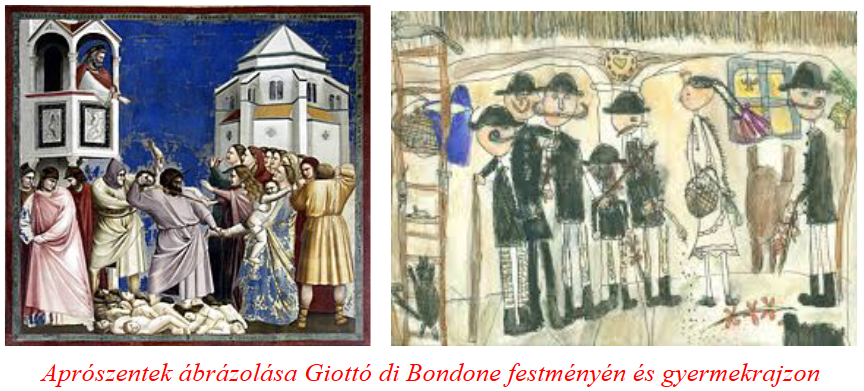
The Day of All Saints is a custom known and practiced in many European countries, which is expressed by caning.
It is known in all regions of Hungary, which is also expressed by the words flogging, also known as suprikálás, odóricsólás, cáplúsál. During this, the boys went from house to house, and while they recited many good wishes and rhymes, they berated the girls. Originally, boys were beheaded, which refers to the martyrdom of the boys in Bethlehem. The caning of girls is explained by the fact that it is done in the name of justice. by caning .
Another, less well-known tradition of the day is the sprinkling of mustard seeds, which also occurs in the Gospel of Matthew. His testimony is that the mustard seed is the smallest seed, yet it can grow into a large tree, which is a nesting place for birds. Growth exemplifies the development of children, the growth of God's kingdom.
New Year's Eve and New Year
New Year's Eve, which is celebrated on the last day of the year, December 31, the seventh day after Christmas, is New Year's Eve. We derive its name from Pope Sylvester, who served between 314-335. In most countries, the last day of the year is accompanied by great rejoicings, eating, drinking, and fireworks. Although New Year's Eve is not a public holiday in Hungary, this is not noticeable in the mood and preparations. New Year's Eve is a night of vigil in churches and in families, so they wait for the next year.

New Year's Eve is also accepted outside the countries of the Christian cultural circle, practically all over the world it is the last day of the year. Even if they don't mean the same thing as us Hungarians, for example. New Year's Eve is also one of the noisy parties, which drives away evil spirits by making noise, like many other customs.
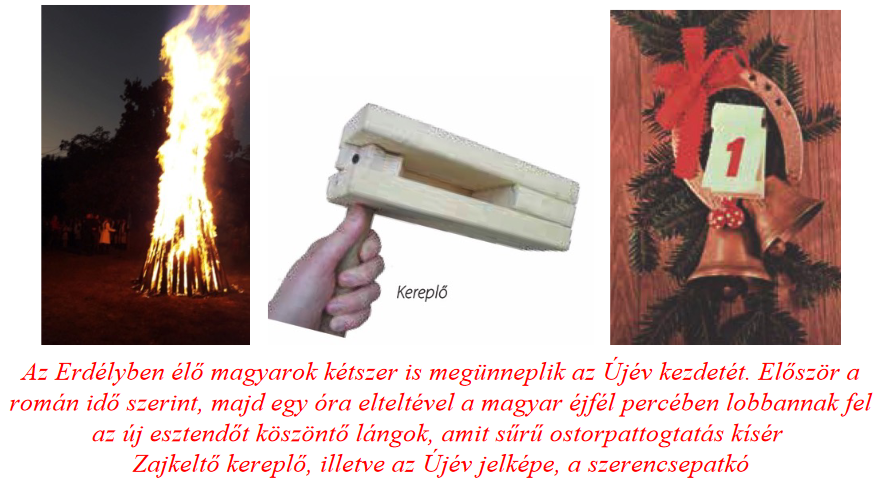
Epiphany
The Epiphany, as mentioned earlier, is the event that closes the Christmas season on January 6. In Hungary, the term water cross originates from the sanctification of water - as one of the most important elements of life. It has three meanings that can be read in the Gospel.
According to the Gospel of Matthew, the first meaning of the Epiphany is the arrival of the three kings and the wise men from the east in Bethlehem, to the baby Jesus, who was given gold, frankincense and myrrh. The three sages - Gáspár, Menyhért and Boldizsár - who are also called magicians, have been a grateful subject of painters and church depictions for centuries.
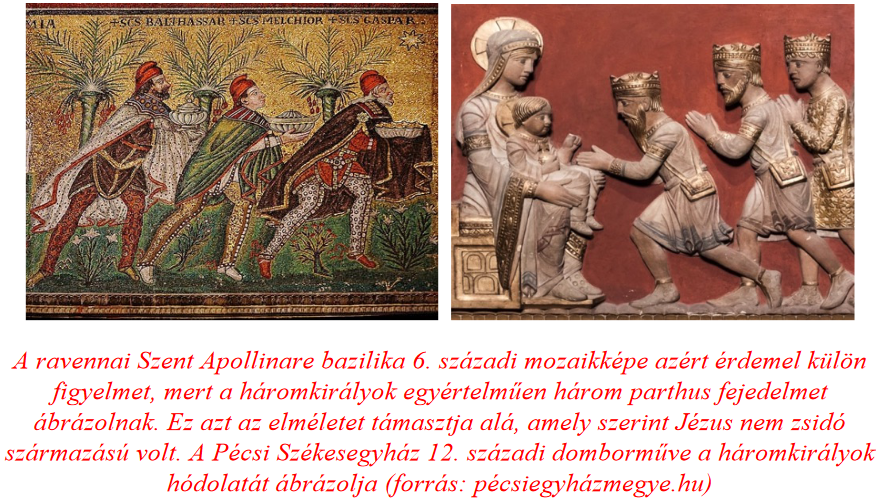
Another evangelical meaning of the baptismal font is when John - who happened to be Jesus' cousin - baptized Jesus in the water of the Jordan River. The Savior then began his teachings, which he did for three years, until his crucifixion. The scene depicts nothing less than the beginning of the creation of the Christian religion.
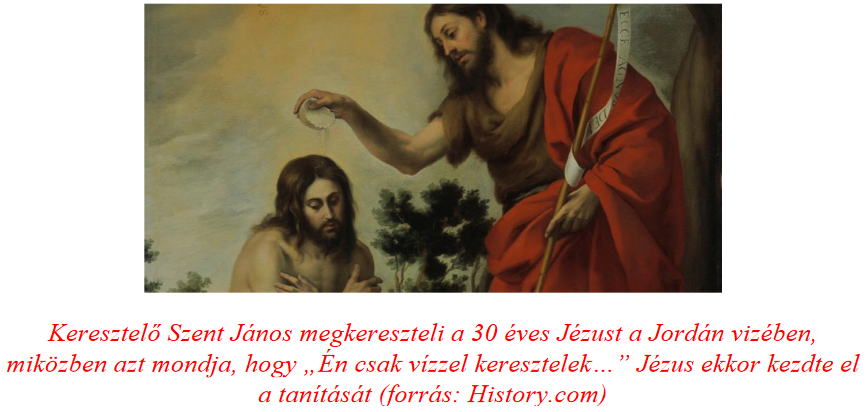
The third meaning of the Epiphany is when Jesus turned the water into wine at the wedding in Cana. This was his first miracle, which he performed at the request of his mother, Mária. Later on, when many customs were associated with it, water consecration was connected with house consecration.

There are many folk customs associated with the water cross, which then opens the carnival season. For example, everything related to life is sprinkled with holy water. The house, the animals, the farmland. They put water in the newborn's bath water, the houses were written with G, M, B (Gáspár, Menyhért, Boldizsár)
Author: Ferenc Bánhegyi
The parts of the series published so far can be read here: 1., 2., 3., 4., 5., 6., 7., 8., 9., 10., 11., 12., 13., 14., 15., 16., 17., 18., 19., 20., 21., 22., 23., 24,, 25., 26. 27.

